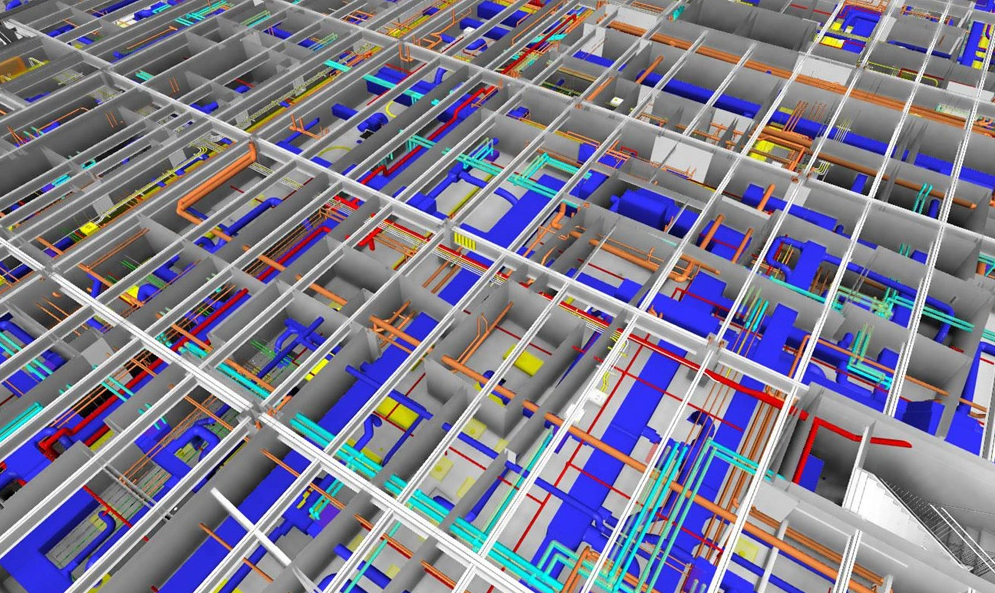In the dynamic landscape of infrastructure development, the integration of Building Information Modeling (BIM) services has emerged as a transformative force, ushering in a new era of efficiency, precision, and sustainability. This blog aims to delve into the profound impact of Infrastructure BIM services, examining how they are not just shaping the present but actively bridging the future of large-scale construction projects.
The Evolution of Infrastructure Development
To understand the impact of Infrastructure BIM services, it is essential to trace the evolution of infrastructure development. This section provides a historical overview, highlighting the challenges and complexities that have historically characterized large-scale projects. The advent of BIM technology is introduced as a game-changer, setting the stage for a paradigm shift in the industry.
BIM Services Unveiled
Before exploring the impact, it’s crucial to understand the fundamentals of BIM services. This chapter delves into the core principles of Building Information Modeling, emphasizing how it goes beyond traditional 2D drawings to create comprehensive digital representations of infrastructure projects. The collaborative nature of BIM and its role in improving communication and coordination is explored.
The Digital Blueprint: 3D Modeling for Infrastructure
One of the key impacts of Infrastructure BIM service is the shift from traditional blueprints to intricate 3D models. This section examines how BIM technology enables detailed and accurate 3D modeling of infrastructure projects. The advantages of visualizing designs in three dimensions, from bridges and highways to tunnels and airports, are explored, highlighting the enhanced clarity and insight offered to project stakeholders.
Precision Planning: Clash Detection and Coordination
Large-scale infrastructure projects often involve numerous intricate systems that must seamlessly coexist. Infrastructure BIM service introduce precision planning through clash detection and coordination mechanisms. This chapter dissects how BIM technology identifies potential clashes between various components, streamlining the construction process and minimizing errors.
Project Lifecycle Management: From Concept to Operation
Infrastructure projects have long lifecycles, from initial conception to eventual operation and maintenance. BIM services extend their impact across this entire spectrum, facilitating comprehensive project lifecycle management. This section explores how BIM technology enhances decision-making at every stage, from design and construction to facility management, ensuring efficiency and sustainability throughout the infrastructure’s life.
Real-Time Collaboration and Communication
Infrastructure projects involve diverse teams and stakeholders, often spread across different locations. BIM services revolutionize collaboration and communication by providing a centralized platform for real-time interaction. This chapter details how project teams, including architects, engineers, contractors, and clients, can collaborate seamlessly, fostering better communication, informed decision-making, and improved project outcomes.
Sustainable Infrastructure: BIM for Environmental Impact
Sustainability is a cornerstone of modern infrastructure development. This section explores how Infrastructure BIM services contribute to creating more sustainable projects. From energy-efficient designs to materials selection and waste reduction, BIM technology enables a holistic approach to sustainable infrastructure. The impact on reducing environmental footprints, achieving green certifications, and meeting global sustainability goals is examined.
Risk Mitigation and Cost Control
Infrastructure projects often involve inherent risks, from unforeseen challenges in construction to budget overruns. Infrastructure BIM service play a crucial role in risk mitigation and cost control. This chapter investigates how BIM technology aids in identifying potential risks, optimizing project schedules, and providing accurate cost estimates. The impact on minimizing uncertainties and ensuring better financial control is emphasized.
Public Engagement and Visualization
Engaging the public in large-scale infrastructure projects is vital for success. BIM services offer tools for visualizing projects in a way that is easily understandable to the general public. This section explores how BIM technology facilitates public engagement through interactive visualizations, virtual reality experiences, and simulations. The impact on creating informed, engaged communities and gaining public support for projects is discussed.
Future Trends and Innovations
As technology continues to evolve, so do the possibilities within Infrastructure BIM service. This chapter provides insights into emerging trends, including augmented reality applications, artificial intelligence integration, and the utilization of Internet of Things (IoT) devices. The impact of these future innovations on further enhancing the capabilities and efficiency of Infrastructure BIM services is explored.
Conclusion
The impact of Infrastructure BIM services is not just confined to the present; it is actively shaping the future of how we conceive, plan, and construct large-scale infrastructure projects. ENGISOFT ENGINEERING – BIM Staffing & BIM Services From the precision of 3D modeling to the sustainability initiatives and real-time collaboration, BIM technology is a catalyst for positive change in the infrastructure development landscape. As we bridge the future with Infrastructure BIM services, the industry is not just witnessing a technological revolution but a paradigm shift towards more efficient, sustainable, and resilient infrastructure that will stand the test of time.

